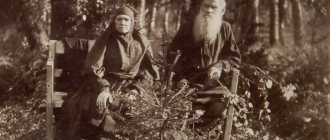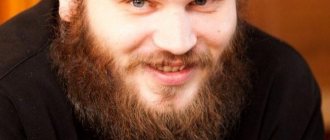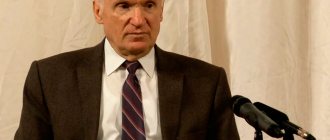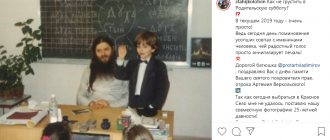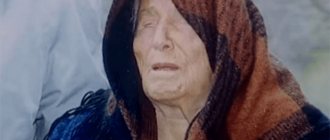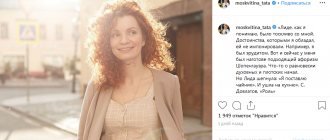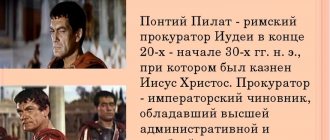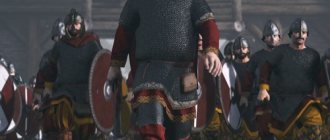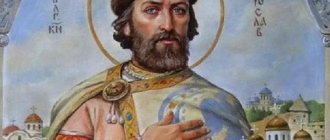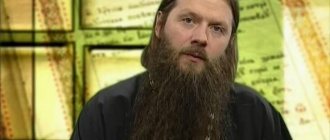The beginning of the spiritual path
In the worldly life of the future Pope, he was called Albino Luciani.
He was born on October 17, 1912 in a small village near Venice. His family was poor. My father worked at a factory and considered himself a socialist. Young Luciani began his education at the Feltre Theological Seminary. He later studied at the Belluno Seminary. On July 7, 1935, Albino Luciani was ordained as a priest, then moved to the Gregorian Institute of Rome. There Albino Luciani received his doctorate in theology. He is defending a dissertation on the Catholic theologian Antonio Rosmini (1797-1855).
After studying in Rome, Luciani returned to his native diocese of Belluno and began teaching the law of God to children from poor families. Albino Luciani's career is taking off. After ten years of working as a priest in the parish, he becomes deputy vicar in the diocese.
In 1958, Luciani was elevated to bishop and accepted a new appointment to the bishopric of Vittorio Veneto. This position was to Albino's liking, since the bishopric was very poor and small. Luciani could personally meet and communicate with any of the believers.
In 1969, Albino Luciani was appointed Patriarch of Venice, and four years later he was promoted to cardinal. Having accepted the highest rank of clergy, Albino remains a cheerful, easy-to-communicate and friendly person.
Youth
In 1938, John Paul II, whose biography is the envy of any Christian, graduated from a classical college and received the sacrament of chrismation. According to historians, Karol studied quite successfully. Having completed his secondary education on the eve of World War II, he continued his studies at the Jagiellonian University in Krakow at the Faculty of Polish Studies.
In four years, he managed to study philology, literature, Church Slavonic writing, and even the basics of the Russian language. As a student, Karol Wojtyla enrolled in a theater club. During the years of occupation, the professors of this one of the most famous universities in Europe were sent to concentration camps, and classes officially ceased. But the future pontiff continued his studies, attending classes underground. And so that he would not be driven to Germany, and he could support his father, whose pension was cut by the occupiers, the young man went to work in a quarry near Krakow, and then moved to a chemical plant.
John Paul I on the throne of Pope
After the death of Paul VI, a conclave elects the next pope within a short period of time. It becomes Albino Luciani. This was a complete surprise both for Luciani himself and for everyone else. The head of the Catholic Church began his papacy with innovations. For the first time in the history of Catholicism, the new pope chose a double name for himself. It began to be named after two previous popes: John XXIII and Paul VI.
Then the ruler of the Holy See expressed his rejection of the tiara and the coronation ceremony, adopted in the Middle Ages, replacing it with a festive mass at St. Peter's Basilica. These innovations were regarded as a decisive rejection of secular power. At the celebration dedicated to the enthronement of the new Pope, an unpleasant incident occurred. The celebration was attended by a representative from the Russian Orthodox Church, headed by Metropolitan Nikodim of Leningrad and Ladoga (in the world - Boris Georgievich Rotov). At a reception with John Paul I, the Metropolitan of the Orthodox Church suddenly died of a heart attack. This sad incident was interpreted as a bad omen for the new Pope.
In the Curia of Rome, the pope's innovations began to be watched with concern. Luciani did not comply with the rules of the “secular order” that had been established for centuries. According to some dignitaries, he behaved as if he wanted to solve all the difficulties of the church in one month. John Paul I caused irritation because he did not take part in diplomatic intrigues, and when he spoke in front of people, he tried to speak in his own words, and not read from cheat sheets prepared in advance for him. He compared the Papal Apartments to a “holy cage” in which he felt like a prisoner. During such a short stay on the throne, the pope did not issue a single encyclical (papal document or message) and did not take other actions that would allow one to form one opinion or another about him. However, John Paul I said that the main reason for atheism is the discrepancy between the actions and words of Catholics.
Assassination
On May 13, 1981, the life of John Paul II almost ended. It was on this day on the square of St. Peter in the Vatican, an attempt was made on his life. The perpetrator was Mehmet Agca, a member of Turkish far-right extremists. The terrorist seriously wounded the pontiff in the stomach. He was arrested immediately at the crime scene. Two years later, dad came to Agca in prison, where he was serving a life sentence. The victim and the criminal talked about something for a long time, but John Paul 2 did not want to talk about the topic of their conversation, although he said that he had forgiven him.
Death of John Paul I
On the night of September 28-29, 1978, 33 days after the enthronement of John Paul I, he was found dead in his bedroom. Dad's body was discovered by his personal secretary when he entered his room in the morning. On the table there was a lit night lamp and an open book.
According to the official version and medical testimony of doctors, the Pope died of a myocardial infarction. The death of John Paul I occurred suddenly, around midnight on September 28th.
In unofficial sources, there are versions of the poisoning of John Paul I. In this context, the death of the Orthodox Metropolitan Nicodemus is considered, who drank poisoned coffee, supposedly prepared for the pope. This theory is supported by the fact that John Paul I never complained about his heart, and, according to his treating doctor, he was a completely healthy person.
The relatives of John Paul I said that immediately after the coronation ceremony the pope was cheerful and optimistic, but shortly before his death he was found sad and preoccupied.
In 2003, the process of his beatification began (a rite in the Catholic Church in which the deceased is beatified). According to many parishioners, miraculous healings are taking place in the diocese of Belluno, where Albino Luciani served. In the fall of 2021, Pope Francis approved the canonization of Pope John Paul I.
Childhood
Karol Józef Wojtyła, the future great John Paul II, was born in a small town near Krakow into a military family. His father, a lieutenant in the Polish army, was fluent in German and systematically taught his son the language. The mother of the future pontiff is a teacher; she, according to some sources, was Ukrainian. It is precisely the fact that the ancestors of John Paul 2 were of Slavic blood that apparently explains the fact that the Pope understood and respected everything related to the Russian language and culture. When the boy was eight years old, he lost his mother, and at the age of twelve his older brother also died. As a child, the boy was interested in theater. He dreamed of growing up and becoming an artist, and at the age of 14 he even wrote a play called “The Spirit King.”
Personal life
With the passage of time, it is difficult to say what kind of pope John Paul I would have been. One thing was clear - he intended to continue the work that his predecessors, John and Paul, had begun. The rules of “secular etiquette” established in the Vatican were a difficult burden for him. It was easier for him to live and work among ordinary parishioners and poor people. He strove for simplicity, renewal of the policies of the papacy and democracy. He was called "smiling dad" or "adolescent dad."
Education
In 1942, Karol enrolled in general education courses at a theological seminary that operated clandestinely in Krakow. In 1944, Archbishop Stefan Sapieha, for security reasons, transferred Wojtyła and several other “illegal” seminarians to the diocesan administration, where they worked in the archbishop’s palace until the end of the war. The thirteen languages that John Paul II spoke fluently, the lives of saints, one hundred philosophical and theological works, as well as the fourteen encyclicals and five books he wrote made him one of the most enlightened pontiffs.
Years of pontificate
In 1982 he met with Yasser Arafat. A year later, John Paul II visited the Lutheran Church in Rome. He became the first pope to take such a step. In December 1989, the pontiff received a Soviet leader for the first time in the history of the Vatican. It was Mikhail Gorbachev.
Hard work and numerous trips around the world undermine the health of the head of the Vatican. In July 1992, the pontiff announced his upcoming hospitalization. John Paul II was diagnosed with a tumor in his intestines that needed to be removed. The operation went well, and soon the pontiff returned to his normal life.
A year later, he ensured that diplomatic relations were established between the Vatican and Israel. In April 1994, the pontiff slipped and fell. It turned out that his femoral neck was broken. Independent experts claim that it was then that John Paul 2 began to develop Parkinson's disease.
But even this serious illness does not stop the pontiff in his peacemaking activities. In 1995, he asks for forgiveness for the evil that Catholics in the past caused to believers of other faiths. A year and a half later, the Cuban leader Castro comes to the pontiff. In 1997, the pope came to Sarajevo, where in his speech he spoke about the tragedy of the civil war in this country as a challenge for Europe. During this visit, his motorcade was repeatedly blocked by minefields.
In the same year, the pontiff comes to Bologna for a rock concert, where he appears as a listener. A few months later, John Paul 2, whose biography is full of peacekeeping activities, makes a pastoral visit to the territory of communist Cuba. In Havana, at a meeting with Castro, he condemns economic sanctions against this country and gives the leader a list of three hundred political prisoners. The culmination of this historic visit is the mass that the pontiff celebrates in Revolution Square in the Cuban capital, where more than a million people gather. After the pope's departure, the authorities released more than half of the prisoners.
In the year 2000, the pontiff came to Israel, where he prayed for a long time at the Western Wall in Jerusalem. In 2002, John Paul II visits a mosque in Damascus. He becomes the first pope to take such a step.
Peacekeeping activities
Condemning all wars and actively criticizing them, in 1982, during the crisis associated with the Falkland Islands, the pontiff visited Great Britain and Argentina, calling on these countries to conclude peace. In 1991, the pope condemns the conflict in the Persian Gulf. When the war began in Iraq in 2003, John Paul II sent a cardinal from the Vatican on a peacekeeping mission to Baghdad. In addition, he blessed another legate for a conversation with then US President Bush. During the meeting, his envoy conveyed to the head of the American state the pontiff's sharp and rather negative attitude towards the invasion of Iraq.
Apostolic Visits
John Paul 2 visited about one hundred and thirty countries during his trips abroad. He came to Poland the most - eight times. The pontiff made six visits to the USA and France. He visited Spain and Mexico five times each. All his trips had one goal: they were aimed at helping to strengthen the position of Catholicism throughout the world, as well as establishing connections with other religions, and primarily with Islam and Judaism. Everywhere the pontiff spoke out against violence, defending the rights of people and rejecting dictatorial regimes.
In total, during his time at the head of the Vatican, the pope traveled more than a million kilometers. His unfulfilled dream remained a trip to our country. During the years of communism, his visit to the USSR was impossible. After the fall of the Iron Curtain, the visit, although it became politically possible, was then opposed by the Russian Orthodox Church.
Notes
- As sainthood bid heats up, book debunks conspiracies on John Paul I
- Andrey Soldatov, Vasily Gulin. Holy War (undefined)
(inaccessible link). Access date: June 22, 2010. Archived November 12, 2009. - Hieromonk Anatoly (Berestov). Response to the article “Nicodemus’s Sin” Top Secret No. 6/111 dated 06/1998
- Pope Francis has approved preparations for the canonization of John Paul I, whose death in 1978 gave rise to a conspiracy theory, NEWSru.com
. Retrieved January 28, 2021. - Pope Francis officially declares John Paul I 'venerable' | CatholicHerald.co.uk, CatholicHerald.co.uk
(9 November 2017). Archived from the original on November 10, 2021. Retrieved January 28, 2021.
Links
2nd century Alexander I • Sixtus I • Telesphorus • Hyginus • Pius I • Anicetus • Soter • Eleutherius • Victor I • Zephyrinus III century Calixtus I • Urban I • Pontian • Anter • Fabian • Cornelius • Lucius I • Stephen I • Sixtus II • Dionysius • Felix I • Eutyches • Gaius • Marcellinus IV century Marcellus I • Eusebius • Miltiades • Sylvester I • Marcus • Julius I • Liberius • Damasius I • Siricius • Anastasius I 5th century Innocent I • Zosimus • Boniface I • Celestine I • Sixtus III • Leo I • Gilarius • Simplicius • Felix III (II) • Gelasius I • Anastasius II • Symmachus 6th century Hormizd • John I • Felix IV (III) • Boniface II • John II • Agapitus I • Silverius • Vigilius • Pelagius I • John III • Benedict I • Pelagius II • Gregory I 7th century Sabinian • Boniface III • Boniface IV • Adeodates I • Boniface V • Honorius I • Severinus • John IV • Theodore I • Martin I • Eugenius I • Vitaly • Adeodates II • Domnus • Agathon • Leo II • Benedict II • John V • Conon • Sergius I 8th century John VI • John VII • Sisinnius • Constantine • Gregory II • Gregory III • Zechariah • Stephen II • Stephen II (III) • Paul I • Stephen III (IV) • Adrian I • Leo III
9th century Stephen IV (V) • Paschal I • Eugene II • Valentine • Gregory IV • Sergius II • Leo IV • Benedict III • Nicholas I • Adrian II • John VIII • Marinus I • Adrian III • Stephen V (VI) • Formosus • Boniface VI • Stephen VI (VII) • Romanus • Theodore II • John IX • Benedict IV 10th century Leo V • Sergius III • Anastasius III • Landon • John X • Leo VI • Stephen VII (VIII) • John XI • Leo VII • Stephen VIII (IX) • Marinus II • Agapitus II • John XII • Leo VIII • Benedict V • John XIII • Benedict VI • Benedict VII • John XIV • John XV • Gregory V • Sylvester II 11th century John XVII • John XVIII • Sergius IV • Benedict VIII • John XIX • Benedict IX • Sylvester III • Benedict IX • Gregory VI • Clement II • Benedict IX • Damasus II • Leo IX • Victor II • Stephen IX (X) • Nicholas II • Alexander II • Gregory VII • Victor III • Urban II • Paschal II 12th century Gelasius II • Calixtus II • Honorius II • Innocent II • Celestine II • Lucius II • Eugenius III • Anastasius IV • Hadrian IV • Alexander III • Lucius III • Urban III • Gregory VIII • Clement III • Celestine III • Innocent III XIII century Honorius III • Gregory IX • Celestine IV • Innocent IV • Alexander IV • Urban IV • Clement IV • Gregory X • Innocent V • Adrian V • John XXI • Nicholas III • Martin IV • Honorius IV • Nicholas IV • Celestine V • Boniface VIII XIV century Benedict XI • Clement V • John XXII • Benedict XII • Clement VI • Innocent VI • Urban V • Gregory XI • Urban VI • Boniface IX 15th century Innocent VII • Gregory XII • Martin V • Eugene IV • Nicholas V • Calixtus III • Pius II • Paul II • Sixtus IV • Innocent VIII • Alexander VI 16th century Pius III • Julius II • Leo X • Adrian VI • Clement VII • Paul III • Julius III • Marcellus II • Paul IV • Pius IV • Pius V • Gregory XIII • Sixtus V • Urban VII • Gregory XIV • Innocent IX • Clement VIII 17th century Leo XI • Paul V • Gregory XV • Urban VIII • Innocent X • Alexander VII • Clement IX • Clement X • Innocent XI • Alexander VIII • Innocent XII • Clement XI XVIII century Innocent XIII • Benedict XIII • Clement XII • Benedict XIV • Clement XIII • Clement XIV • Pius VI • Pius VII 19th century Leo XII • Pius VIII • Gregory XVI • Pius IX • Leo XIII XX century Pius X • Benedict XV • Pius XI • Pius XII • John XXIII • Paul VI • John Paul I • John Paul II XXI Century Benedict XVI • Francis The list is divided by century based on the start date of the pontificate
Teenage years and early life
The Pope's youth occurred during a period of social cataclysms. The massacre unleashed by Hitler and the formation of the socialist camp that followed the victory made drastic adjustments to the fate of Wojtyła, who during this period became Reverend Father Karol.
Student times
At the Jagiellonian University, where the future pontiff entered in 1938, he chose Polish philology as his specialty. He did not abandon his passion for the stage, playing in the Krakow “Studio 38”, and wrote poetry. When the German occupiers closed the university, Wojtyla had to work as a warehouse worker to feed his elderly father, after which he worked in stone quarries and a chemical factory owned by.
The father of the future pontiff died 2 years after the start of the war. Around this period, Karol decided to choose the path of a clergyman, and in October 1942, with the help of Archbishop Sapieha, he entered the Krakow Theological Seminary, which worked underground during the occupation. When, shortly before liberation, the Gestapo made mass arrests, Wojtyla found refuge in the residence of the Polish primate. There, on November 9, 1944, he received tonsure and received the rank of cleric.
Ordination to the priesthood
Wojtyła completed his education at the Faculty of Theology at the Jagiellonian University, which was reopened after the capture of Krakow by Soviet troops. In the fall of 1946, Cardinal Sapieha ordained the young cleric as a priest and sent him to the Vatican for doctoral studies at the Institute of St. Thomas.
Upon his return, Rev. Father Karol accepted the duties of vicar in the Church of the Assumption of the Blessed Virgin Mary, located in the village of Niegovits, Krakow parish, and the following year, 1948, took the position of vicar in the Krakow Church of St. Florian. The Polish communist authorities had a negative attitude towards religious communities and pastors and threatened reprisals, but despite this, the priest for many years made tourist trips on skis and kayaks with students and teachers, celebrated masses right in forest clearings, and conducted catechesis.
University work
At his alma mater in 1953, Karol Wojtyła wrote a second dissertation devoted to the study of problems of religious ethics. In the same year, he began teaching moral theology, and when the government closed the theological faculty, he headed the department of ethics at the Catholic University of Ljubljana.
In culture
- Cardinal Lamberto is one of the heroes of the film The Godfather 3. He confesses to Michael Corleone who turned to him for help. Having become Pope John Paul I, he steadily investigates the abuses of the highest church officials, but dies, poisoned by powerful conspirators. The role of the pontiff was played by Raf Vallone.
- The album “Wave” by Patti Smith Group is dedicated to dad.
- Song Hey!
Luciani by The Fall about Pope John Paul I. - In the book “A History of Solitude” by John Boyne, in several chapters the main character communicates with the pope before and after his papacy. In addition, the death of the pope and doubts about the naturalness of his death are mentioned.
